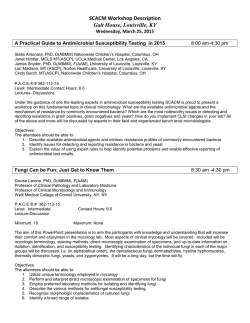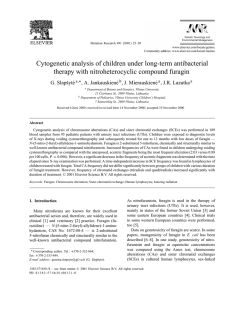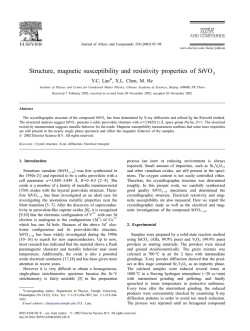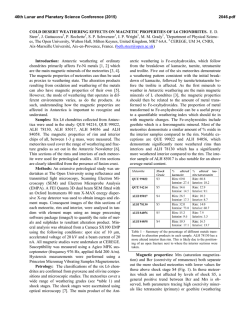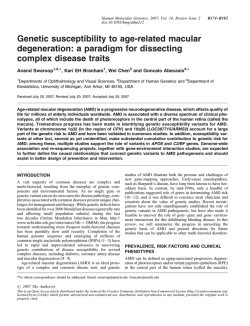
1-s2.0-S1569905614604474-main
453 Diabetes mellitus as a risk factor for resistant strains on female patients with recurrent urinary tract infection: A study of 493 patients Eur Urol Suppl 2014;13;e453 Print! Print! Hisano M. 1 , Bruschini H.1 , Nicodemo A.C. 2 , Lucon M. 1 , Gomes C.M. 1 , Baracat F.1 , Figueiredo J.A.1 , Srougi M. 1 1 Hospital Das Clinicas, University of Sao Paulo, Dept. of Urology, Sao Paulo, Brazil, 2 Hospital Das Clinicas, University of Sao Paulo, Dept. of Infectious Disease, Sao Paulo, Brazil INTRODUCTION & OBJECTIVES: Diabetes mellitus (DM) is a prevalent chronic disease in adult population. This condition is a well-known risk and complicating factor for others disease, such as urinary tract infection (UTI). General host factors enhancing risk for urinary tract infection in diabetics include age, metabolic control, and long term complications, primarily diabetic nephropathy and cystopathy. This study aims to identify a potential effect of DM on bacteriology and susceptibility profile for UTI. MATERIAL & METHODS: Between January/2007 and December/2012, we retrospectively review the clinical data and laboratory findings of 493 female patients with diagnosis of simple or recurrent uncomplicated urinary tract infection, treated at our University Hospital. Patients were divided in two groups: the first with patients without DM (group 1); and the second with diabetic patients (group 2). Bacteriology of urine culture and susceptibility tests for nalidixic acid, amoxicillin/clavulanate, ampicillin, cefoxitin, ciprofloxacin, gentamicin, levofloxacin, norfloxacin, nitrofurantoin and TMP-SMX were performed. The results of each group were compared. Statistical analysis was performed with X 2 test or Fisher´s exact test with significance of p<0.05. RESULTS: Of these patients, 46 (9.3%) had diabetes mellitus. Recurrent UTI was more frequent in group 2 (67.4% versus 41.9% at group 1 - p=0.001). The bacteriological profile showed a higher frequency of Enterococcus faecalis on group 2 (table 1), comparing to group 1 (15.2% versus 5.6%, p=0.02). The susceptibility profile showed a significant decrease when comparing groups 1 and 2 for: nalidixic acid (81.3% x 60%); ciprofloxacin (84.9% x 63.6%); gentamicin (97.1% x 83.3%); levofloxacin (86.2% x 68.4%); norfloxacin (86.9% x 64.3%); and TMP-SMX (67.3% x 51.2%), respectively, with p<0.05. No significant changes on susceptibility profile comparing groups 1 and 2 were identified for amoxicillin/clavulanate (94.3% x 93.9%), ampicillin (47.3% x 43.2%), cefoxitin (95.5% x 93.3%) and nitrofurantoin (92.4% x 97.1%), respectively, although ampicillin already has a high resistance profile in both groups. Data are summarized on table 2. Table 1 Bacteriology Group 1 Group 2 p Escherichia coli 74.5% 80.4% 0.38 Enterococcus faecalis 5.6% 15.2% 0.02 Staphylococcus saprophyticus 7.4% 0% 0.06 Klebsiella pneumoniae 3.6% 6.5% 0.41 Proteus mirabilis 4.3% 2.2% >0.99 Streptococcus agalactiae 3.5% 2.3% >0.99 Other species 7.6% 8.7% 0.77 Table 2 Antimicrobial Nalidixic acid Group 1 Group 2 p Susceptible(%) Resistant(%) Susceptible(%) Resistant(%) 81.3 18.7 60 40 0.002 Amoxicillin/clavulanate 94.3 5.7 93.9 6.1 >0.99 Ampicillin 47.3 52.7 43.2 56.8 0.60 Cefoxitin 95.5 4.5 93.3 6.7 0.64 Ciprofloxacin 84.9 15.1 63.6 36.4 <0.001 Gentamicin 97.1 2.9 83.3 16.7 0.001 Levofloxacin 86.2 13.8 68.4 31.6 0.004 Norfloxacin 86.9 13.1 64.3 35.7 0.04 Nitrofurantoin 92.4 7.6 97.1 2.9 0.49 TMP-SMX 67.3 32.7 51.2 48.8 0.04 CONCLUSIONS: Diabetic patients present increased chance of recurrent UTI. The different bacteriology profile and decreased susceptibility to most of antimicrobials make the urine culture recommended before treatment. In our environment, in case of immediate oral empiric treatment, amoxicillin/clavulanate and nitrofurantoin should be indicated until urine culture result.
© Copyright 2024
